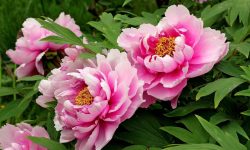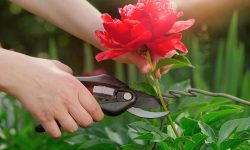Marigolds have earned a special place in home gardens for their vivid colors, natural pest resistance, and long-lasting blooms that brighten the landscape all season long. But to keep these cheerful blooms looking their best, a little regular care is required—especially when it comes to deadheading. This simple gardening technique, often overlooked by beginners, can dramatically improve the health and appearance of marigold plants.
Understanding how to deadhead marigolds properly helps gardeners extend the blooming season, encourage bushier growth, and prevent the plant from diverting energy into seed production. When done consistently, deadheading keeps marigolds vibrant and full of life, turning any flower bed or container into a season-long showcase of color.
In this comprehensive guide, you’ll learn everything you need to know about deadheading marigolds—why it matters, how to do it correctly, when to do it, and how it ties into overall plant care. Whether you’re growing African, French, or signet marigolds, mastering this technique will make a visible difference in your garden’s health and beauty.
Understanding the Importance of Deadheading in Marigolds

Deadheading is one of the simplest yet most effective techniques in garden maintenance. For marigolds, a plant known for its cheerful blooms and extended flowering season, the practice of removing spent flowers plays a crucial role in stimulating new growth. Without this step, marigolds may slow down their blooming cycle, redirecting their energy toward seed production rather than continued flowering. This process interferes with their potential for vibrant displays throughout the season.
By encouraging gardeners to deadhead regularly, marigolds can be prompted to refocus their resources on producing new buds. This results in a longer blooming period and fuller, bushier plants. For marigold varieties such as African and French marigolds, this practice not only enhances their appearance but also boosts the overall health of the plant. In essence, deadheading mimics the natural process of pruning but does so with the goal of continual flower production.
As a bonus, removing spent blooms also keeps the garden neat and visually pleasing. Faded and browning flowers can make even the healthiest plant look tired. With deadheading, your marigold patch retains its vibrancy, and your garden remains a colorful highlight throughout the growing months.
Recognizing When Marigolds Need Deadheading
Timing is an essential factor in effective deadheading. Knowing when a marigold flower has finished blooming can help determine the right moment to intervene. Typically, marigold flowers begin to wilt, fade in color, and dry out at the end of their life cycle. These visual cues are signs that the flower is transitioning into seed production, which, if left unchecked, signals the plant to slow or stop blooming.
Marigolds are usually prolific bloomers, especially in well-lit areas. As a result, gardeners may find themselves deadheading frequently during the peak of summer. The wilting process may start with a soft drooping of the petals, followed by a gradual discoloration—often turning brown or papery. This is the ideal stage to remove the spent bloom to redirect the plant’s energy.
While deadheading can be done at any point during the blooming season, the key is consistency. Allowing too many spent flowers to remain on the plant will reduce its incentive to produce new ones. Observing the plant every few days ensures timely removal and maximum flowering potential.
Tools and Preparation Before You Begin
Before starting the deadheading process, a few basic tools and preparations can ensure efficiency and prevent damage to the plant. Gardeners can use their fingers to pinch off the spent blooms, but for a cleaner cut and to minimize the risk of tearing stems, small pruning shears or garden scissors are preferred. These tools should be sterilized beforehand to prevent the spread of disease between plants.
Wearing gardening gloves can also provide protection from sap and sharp stems, particularly in dense or mature marigold patches. Some marigold varieties have sticky stems, which can irritate sensitive skin, making gloves a worthwhile addition. Additionally, having a small container or bag on hand can help collect the dead blooms for composting or disposal.
Selecting the right time of day for deadheading is also important. Mornings or late afternoons are typically best, as the plants are less stressed and temperatures are cooler. Avoid deadheading during peak sun exposure, as this may cause the plant additional stress or expose newly cut areas to harsh conditions.
How to Properly Deadhead Marigold Flowers
The actual technique of deadheading marigolds involves locating the flower head that has started to wither and tracing it back to the first set of full leaves or a side branch. Using clean fingers or a pair of shears, the flower should be removed just above a leaf node. This ensures that the plant can generate new side shoots or blooms from that point, rather than leaving an empty or unattractive stub.
When pinching with your fingers, apply gentle but firm pressure to avoid pulling on the stem. If you’re using scissors or pruners, make a clean, angled cut just above the node. Avoid cutting too low, which could remove emerging buds, or too high, which could leave a stub that turns brown.
After deadheading, it’s a good idea to examine the surrounding foliage for any signs of disease or pest issues. Spent blooms can sometimes harbor insects or fungal spores, so this process doubles as an opportunity to monitor the plant’s health. Removing any discolored or damaged leaves at the same time can help maintain a healthy marigold bed.
Encouraging Continuous Bloom Through Regular Care
Deadheading alone does not guarantee ongoing flowering—it’s part of a broader care routine that supports vigorous growth. For marigolds to continuously bloom, they require consistent sunlight, preferably at least six hours of direct light each day. Placing marigolds in shaded or overly moist environments can reduce flowering regardless of how often you deadhead.
Proper watering is equally essential. Marigolds prefer moderately moist soil but can be susceptible to root rot in overly soggy conditions. A good watering routine involves soaking the base of the plant when the top inch of soil feels dry. Pairing this with mulch can help retain moisture and reduce the frequency of watering during hot spells.
Feeding marigolds with a balanced, low-nitrogen fertilizer can also aid in flower production. Too much nitrogen may promote leafy growth at the expense of flowers. A bloom-boosting fertilizer applied every few weeks during the growing season can help maximize results when combined with routine deadheading.
The Role of Deadheading in Preventing Seed Formation
One of the most significant benefits of deadheading marigolds is the prevention of seed formation. When a flower matures and is left on the plant, it begins to divert energy into creating seeds. While this is a natural reproductive process, it also signals the plant that its job is done for the season. By removing these fading blooms before seeds form, you effectively trick the plant into continuing its bloom cycle.
In this way, deadheading prolongs the flowering season well into late summer or even early fall. For gardeners who want to maintain vibrant garden beds throughout the warm months, regular deadheading becomes a crucial part of the care regimen. It allows the plant to focus on growing new flower buds rather than transitioning into dormancy or seed-setting mode.
However, for those interested in collecting seeds, a different approach is needed. Letting a few flowers mature naturally toward the end of the season can provide viable seeds for the next year. But for extended color and blooming power, deadheading remains the preferred strategy.
Differences in Deadheading Techniques Among Marigold Varieties
Different types of marigolds may benefit from slightly varied deadheading approaches. African marigolds, known for their large, pom-pom-like blooms, require more attention due to the sheer size of their flower heads. Deadheading these may involve deeper cuts to prevent unsightly stubs or browning stems. Their tall structure also means that spent flowers are more noticeable and can impact the visual appeal of a flower bed.
French marigolds, on the other hand, tend to produce smaller, more numerous flowers. These plants are typically bushier and may need more frequent but less invasive deadheading. Pinching off the dead blooms with fingers often works well for these compact varieties, and they respond quickly by producing more buds in their place.
Signet marigolds have smaller, daintier flowers and fine foliage, making them an excellent choice for borders or containers. Deadheading these varieties requires a gentle hand, as their stems are more delicate. Regardless of the variety, understanding their unique growth habits helps improve the effectiveness of the deadheading process.
Common Mistakes to Avoid While Deadheading
While deadheading marigolds is generally straightforward, some common errors can hinder plant performance. One of the most frequent mistakes is cutting too high above a leaf node, which can result in unattractive stubs that don’t encourage new growth. Another issue arises when gardeners only remove the flower petals but leave the seed head intact, allowing the plant to shift energy toward seed development.
Overhandling the plant during hot, dry conditions can also introduce stress, potentially weakening the stems or causing temporary wilting. Choosing the right time of day, using clean tools, and being gentle with the stems can help reduce these risks. Inconsistent deadheading is another issue—allowing spent blooms to accumulate can slow flowering, even if you later remove them all at once.
Lastly, using fertilizers with high nitrogen content immediately after deadheading can backfire. Although feeding your marigolds is beneficial, prioritizing phosphorus-rich fertilizers helps direct energy toward blooming rather than leaf production. Balancing these elements helps the plant remain healthy and productive after each deadheading session.
Signs Your Marigolds Are Responding to Deadheading
Within days of successful deadheading, gardeners often notice signs that their marigolds are responding positively. New flower buds begin forming near the cut sites, and the plant may develop additional branches or lateral stems. The overall shape of the plant becomes bushier and more robust, creating a fuller appearance in the garden.
Color vibrancy may also improve, as the plant redirects its nutrients and energy toward new blooms. Instead of fading, the marigold patch maintains a lively, fresh look well beyond the early stages of the growing season. In fact, with regular care, some marigold varieties continue blooming until the first frost, making them one of the most rewarding annuals for gardeners to cultivate.
Gardeners also report an increase in pollinator activity, such as visits from bees and butterflies. This is likely because of the higher volume of fresh, fragrant flowers available, creating a mini ecosystem that benefits both the plants and the surrounding environment.
Sustainable Gardening Through Composting Dead Flowers
Deadheading marigolds not only improves plant health but also contributes to sustainable gardening when done thoughtfully. The removed flower heads can be added to a compost bin, where they decompose and return valuable nutrients to the soil. Composting these organic materials reduces waste and provides an eco-friendly solution to garden maintenance.
By incorporating spent marigold blooms into a compost pile, gardeners enrich the soil for future planting. These flowers break down quickly, especially when mixed with green materials like grass clippings or kitchen scraps. The resulting compost can be used to feed next season’s marigolds or other flowering plants, creating a closed-loop system that benefits the entire garden.
This sustainable approach aligns with the principles of eco-conscious gardening, encouraging minimal waste and maximum reuse. When deadheading becomes part of a larger cycle of renewal, it supports not only healthier marigolds but also a healthier environment.
FAQs About Deadheading Marigolds
What does it mean to deadhead marigolds?
Deadheading marigolds means removing spent or faded flowers from the plant to encourage it to produce more blooms. This process helps redirect the plant’s energy away from seed production and toward continued flowering, making your garden look fresher and more colorful throughout the growing season.
How often should I deadhead marigolds?
Deadheading should be done regularly—typically every few days during peak blooming periods. By keeping a close eye on your marigolds and removing wilted flowers promptly, you can ensure a steady supply of new blossoms.
Can I use my fingers to deadhead marigolds?
Yes, you can use your fingers to gently pinch off dead marigold flowers. However, for cleaner cuts and to reduce the risk of stem damage or disease, using small pruning shears or garden scissors is often recommended.
Will deadheading make marigolds bloom more?
Absolutely. Deadheading signals the marigold plant to keep producing new buds instead of shifting its energy to seed development. This practice extends the blooming period and encourages fuller, bushier growth.
Is it necessary to deadhead all types of marigolds?
While all marigold types benefit from deadheading, the technique may vary slightly depending on the variety. African marigolds often require deeper cuts due to their larger blooms, while French and signet marigolds can usually be pinched by hand. Regardless of the variety, regular deadheading promotes healthier and longer-lasting flowers.
What happens if I don’t deadhead marigolds?
If marigolds are not deadheaded, they will begin to go to seed. This shift causes the plant to slow or stop producing new flowers. Additionally, the plant may start to look messy or tired as faded blooms accumulate.
Can I compost the deadheaded marigold flowers?
Yes, dead marigold flowers can be added to your compost pile. They break down easily and contribute organic material to your compost, enriching the soil for future gardening.
When is the best time of day to deadhead marigolds?
The ideal time to deadhead marigolds is in the morning or late afternoon when the plant is less stressed from heat. Avoid doing it during the hottest part of the day, especially in full sun, to prevent additional stress to the plant.
Conclusion: The Rewards of Regular Deadheading
Deadheading marigolds may seem like a small task, but it has a significant impact on the plant’s productivity and the overall aesthetic of a garden. By consistently removing faded blooms, gardeners stimulate new flower production, enhance the plant’s appearance, and extend the blooming season well into autumn. This simple practice turns an already vibrant flower into a standout performer that brings joy and color to outdoor spaces.
With the right tools, techniques, and timing, deadheading becomes a meditative and rewarding part of the gardening routine. It not only keeps marigolds healthy but also connects gardeners more closely with the rhythms of plant life. Whether you’re growing marigolds in a flower bed, container, or border, taking the time to deadhead will ensure your garden remains full of life and color throughout the season.






